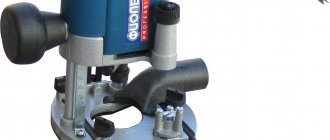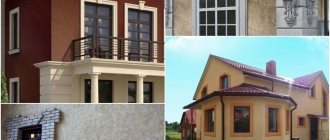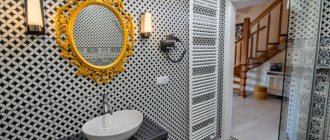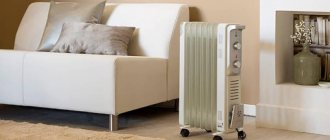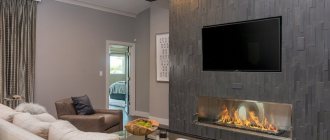Exterior wood paint is an important means of updating and protecting the façade. The high-quality composition will protect against the harmful effects of sunlight and precipitation.
Having chosen a higher-quality composition once, you will have to update it less often, thereby saving on re-application after a few years.
The safety and durability of the facade depends on whether you choose the right coating for treating the outside of your house.
Composition for wood
What paint is better to paint a wooden house
Good paint for facade work should have the following qualities:
- Moisture resistance. Paint for wooden facades forms a protective layer on its surface and prevents the passage of water into it;
- Frost resistance. It is important that exterior wood paint can withstand low temperatures and severe frosts, as well as freeze-thaw cycles;
- It had a UV filter and was not subject to fading or discoloration;
- Wear resistance. Wear-resistant wood paint for exterior use can withstand impacts from falling branches and exposure to chemicals;
- It had antiseptic properties: it prevented the formation of microbes, bacteria, and the establishment of bark beetles in wood.
You can practice at home with your child...
Peculiarities
Facade paint must be resistant to sunlight, because when exposed to sunlight, the material can fade, create swelling of the layer and a crack in the surface. Each buyer chooses paint based on their own preferences and desires, because it must be suitable for your external environment and provide:
- waterproof;
- have steam capacity;
- be resistant to abrasion and wear;
- protect the material from wind, air and ultraviolet light;
- have antibacterial properties;
- prevent pigment color changes.
The choice of paint and varnish material should be taken seriously, because the integrity and neatness of your home will depend on it.
Rating of the best wood paints for exterior use
The best manufacturers of paints and varnishes for outdoor use are well-known brands.
Although some prefer to make the composition themselves:
If you want to buy ready-made, then this information is for you:
"Belinka" is a company that has been producing paint and varnish materials for more than 30 years. It occupies a leading position in the global market for the production of facade products;
Alpina is the most experienced paint and varnish company in existence for over 100 years. It produces paint and varnish materials for exterior and interior use. Its products are universal. "Alpina" produces compounds to create a protective layer not only on wood, but also on metal and other surfaces;
"Olsta" is a company that creates first-class wear-resistant materials. They do not contain harmful impurities, they are safe;
Premium products of the Dulux brand retain their protective properties in any weather and in any climatic conditions;
"Neomid" (more than 30 years of experience) produces odorless paints.
Scope of application
Due to the high technical and operational properties, the unlimited scope of application of acrylic paints is not surprising. They can be used on almost all types of bases, be it wood, concrete, stone or metal, with the exception of some types of plasterboards, which greatly simplifies the choice of materials when carrying out finishing or repair work. In the line of any manufacturer there is always paint for interior and exterior work in a wide range of colors, therefore, there will be the same quality of the painted surface and matching shades during transitions.
When choosing, it is worth considering that there are universal paints in terms of bases, but within the group they usually differ in the specific application - for walls, ceilings and floors. This is due to a practical component - these zones have different operating conditions, and they look different due to the different angle of incidence of light. And the application technique is different, which determines the consistency and composition of the additives.
The popularity of acrylic paints is also explained by the atypical color range - while standard floor enamels are overwhelmingly brown, acrylic ones can be of any color.
Vlademir FORUMHOUSE Member
My wife wants floors at home that are not the color of traditional floor paint, but light, with a brownish tint, that is, as light as possible. Nearby stores offer acrylic flooring; the manufacturer's assortment includes a light color. Does anyone have experience?
Eat.
Nika19 Member of FORUMHOUSE
We painted with water-soluble acrylic, the color was a straw. It turned out to be light-light yellow, a nice shade, I also love light floors.
Antiseptics
During the construction period, the wood must be treated with an antiseptic to prevent the appearance of mold. Mold microspores are volatile. They spread easily and quickly in a wooden house, forming more and more new lesions. Mold enters a person’s respiratory tract, negatively affecting his health. Antiseptics are designed to prevent the appearance of mold and mildew and harmful insects in wood. Antiseptics are divided into water-based, oil-based, and solvent-based products. They are intended for external and internal work, for prevention and restoration. Let's look at the best antiseptics.
"Senezh trans"
The most popular antiseptic is: “Senezh”. It is an antiseptic that protects against wood-eating insects, mold and rot. This product does not wash out. Therefore, it can be used in places with high humidity: baths, saunas, cellars. The manufacturer guarantees the high quality and protective effect of the antiseptic for 30 years.
"Neomid 460"
An antiseptic protects surfaces from fungus and mold.
It is actively used for processing boards, timber, logs that come into contact with water and soil in cellars, baths, and bathrooms. Excellent adhesion to any surface. An environmentally friendly product that does not emit toxic substances. "Aquatex"
The material is used for priming wooden surfaces before applying the topcoat. Increases surface adhesion. It provides bioprotection against pathogenic microorganisms and insect pests. Prevents darkening and fading from ultraviolet rays, protects against precipitation.
Properties
Facade paint differs from others in its properties, which explains the popularity of this product.
Among the characteristic features are the following:
- Waterproof. A layer of paint is used to protect the walls from moisture, which is why the product must have low absorption capacity. Otherwise, the facade will get wet and dirty. Also, due to high humidity levels, salts are deposited on the walls and cracks appear. The lower the level of water permeability, the better the paint;
- Wear resistance. Good resistance can be declared when the paint can withstand at least 5,000 cleaning cycles before it is completely erased;
- Paint consumption. As a rule, this parameter ranges from 100 to 300 g per 1 square meter. m, if painting is done in one layer. For surfaces of different quality, the consumption will also be different.
Facade paints are not used for interior decoration. They are not recommended for use in buildings with high levels of humidity, for example, baths and saunas. For cladding such buildings, it is better to use ventilated facades. In order for the paint to adhere better to the facade, the surface must be thoroughly cleaned and then coated with a fungicidal compound.
Acrylic wood paint for exterior use
The most popular are acrylic paint compositions. Their cost is low.
Quick-drying paint has increased moisture resistance and good adhesion. The range of colors is varied, it is important to use colors. Their base is water, the binding component is acrylate. Let's figure out which acrylic paints are most in demand.
"Belinka"
The coloring composition of the Slovenian manufacturer is famous for:
- reliability and safety;
- used for exterior woodwork: painting facades, window frames;
- the painted facade has a smooth, glossy surface;
- After the paint dries, a durable protective layer is formed on the surface. The protective film protects the wood from insects, pests, fungus, mold, and rotting;
- paint for a wooden house improves the natural grain of wood;
- a wide range of shades allows you to emphasize the natural color of wood and give the facade a luxurious appearance;
- The finishing of the house is not affected by ultraviolet radiation. The color remains the same as when painted after many years;
- long service life is an important advantage of Belinka acrylic paint;
- The product is not afraid of exposure to low and high temperatures, or rain.
Toplazur
The disadvantage of Belinka is the high consumption of the composition.
The fact is that wood easily absorbs the product when first painted. In order to paint a wooden facade well, it is necessary to apply 3 layers. The paint layer takes a long time to dry: 6-10 hours. To ensure that the surface is painted evenly and does not differ in color, so that joints are not visible, the entire facade must be treated.
"Alpina"
This German-made coloring composition confirms its high quality with the appropriate Certificate. It is intended for facades and terraces.
- the coloring composition is wear-resistant;
- prevents the passage of moisture into the wood;
- the elasticity of the composition resists vibrations and protects against the formation of cracks in the wood during shrinkage;
- due to high vapor permeability, condensation does not form, fungus and mold do not appear;
- the product is characterized by low consumption of the composition during surface painting;
- When using it, it is possible to tint the façade surface in any color you desire.
An important disadvantage of the paint and varnish material is the high price and the possibility of streaks appearing after rain.
"Olsta"
The acrylic paint product has a smooth, streak-free surface. Exterior wood paints are produced in Finland. Paint and varnish products are bottled at a Russian plant in Tver. Finnish equipment and technology help Russian industry produce high-quality products at a low price.
- it is safe, does not contain harmful substances and chalk;
- it is anti-allergenic and does not cause allergic reactions;
- resistant to physical stress;
- does not wash off;
- composition consumption is economical;
- it contains antiseptic additives that prevent the formation of rot, mold and mildew;
- intended for wooden facades, treated and untreated plank surfaces;
May be interesting: How to cover the ceiling of a wooden house inside cheaply and beautifully
"Liberon"
Manufacturer: France. It arose back in the 19th century. Painting with premium products gives woodwork new life. The street appearance of the frames and façade after painting with Liberon is luxurious. Every year the company develops a new range of products. The paint forms a durable protective layer.
Reviews: advantages and disadvantages
Experts and experienced craftsmen include the following undeniable advantages of façade acrylic paints:
- environmental safety - no toxins in the composition;
- ease of work - acrylic paints do not have a strong odor;
- fire safety – the absence of flammable components in the composition guarantees the material’s resistance to fire;
- unlimited color palette;
- drying speed - from 1 to 3 hours depending on the thickness of the applied layer;
- Duration of operation of the coating - if all technologies are followed, the coating can last more than 10 years;
- a wide range of applications ensured by the material’s resistance to moisture, mechanical stress and ultraviolet radiation;
- versatility and versatility, which allows the use of acrylic paint in combination with other building materials - the paint can be applied to almost any type of surface, with the exception of only some types of plastic.
Alkyd paint
Alkyd paint compositions have a glossy surface that gives it an attractive appearance. The paint consists of film formers: latex and resin. The coloring composition also includes pigments, solvent, fillers, and additives that give the paint elasticity. A feature of alkyd paints is their uniform application to the surface and rich color. After painting, a thin film is formed on the surface, protecting it from external influences.
The paint has low frost resistance and vapor permeability. The surface does not breathe, does not allow air to pass through. Alkyd paints have a pungent odor that persists even after drying. A primer should be applied before painting.
"Tekc pro"
- the product is used for any premises;
- is highly resistant to water;
- harmful microorganisms: mold and mildew. Penetrates deeply into the surface of the wood, affecting bugs and protecting it from putrefactive processes;
- The product is resistant to chemicals. To wash walls and floors painted with this paint, you can use any detergent;
- has no smell;
- A wide range of shades helps you choose the color of your choice. No tinting required;
- The protective layer is durable.
The disadvantages of paint include high consumption and long drying time. When painting a smooth surface, smudges may occur.
"Tikkurila empire"
- water-alkyd based dye contains bioprotective substances;
- resistant to water, temperature changes, friction, chemicals. The painted surface can be washed with abrasives and sponges, nothing will happen to it. It will retain its smoothness, strength and other positive properties;
- it does not emit harmful fumes, therefore it is suitable for children's institutions and medical centers. Anti-allergenic;
- painting with it is easy and pleasant because it does not smell;
- quick drying, low consumption will save money and time on painting.
"Vincent A-3"
- alkyd-based enamel forms a highly durable glossy coating;
- the protective layer saves the tree from early rotting;
- semi-matte shine emphasizes the natural structure of the wood;
- paint surfaces in 2-3 layers. The low consumption of the composition allows you to save the family budget, while at the same time updating the wooden covering;
- The product applies easily, painting evenly on any wooden surface.
The disadvantage is low wear resistance: it fades from bright sunlight and cracks from temperature changes.
Painting the walls
Now let's look at how to paint walls or ceilings. Whatever type of paint is chosen, it can be applied correctly by following the diagram below:
- You can start painting only after the base has completely dried - plaster on the walls and putty, if used. For cement and gypsum mixtures, this time will be different. Quite often, facade surfaces are painted without plaster, for example, the walls inside a loggia or the brickwork of a garage. Inside the house, painting unplastered surfaces can sometimes be a good design move.
- To determine the amount of dye, it is necessary to know not only the total surface area, but also its consumption per square meter. m, and it may vary for different compositions. Naturally, the number of layers applied is also taken into account.
- All work must be carried out at a temperature not lower than +5°C; before complete drying, it is undesirable for the wall to be exposed to moisture or direct rays of the sun - if it dries unevenly, spots will appear on it.
- The surface is first thoroughly cleaned of dust and debris.
- In order for the coating to look perfect, the wall must first be leveled. If there are cracks, they are widened and sealed with a cement-sand composition. Small chips can be repaired with putty.
- To increase adhesion to the surface (adhesion) and reduce paint consumption, walls after plastering are coated with deep-penetrating acrylic primers. This type of primer is suitable not only for acrylic paints and varnishes, but also for other types, i.e. is universal.
- Water-emulsion and acrylic paint that have thickened during storage, if necessary, are diluted with plain water or a special solvent. Alkyd paints use white alcohol, and oil paints use drying oil. Any solvent is introduced in small portions so as not to destroy the bond between the diluent and the coloring pigment.
- To give the composition a certain shade, colored pigments are introduced into it. Since the paint becomes lighter when it dries, it is difficult to immediately achieve the desired shade and determine what color you will get in the end; you need to test it on a small area of the wall.
- To prevent the paint from having to be washed off, masking paper tape is applied to unpainted surfaces. Heavy furniture that is difficult to remove from the room is covered with film. She better also close the windows and doors.
- Work begins in corners and hard-to-reach places.
- Coating with a brush or roller is done from top to bottom. Water-based or acrylic paint can be applied mechanically using a compressor and a spray gun. The roller is used with a fur coat made of synthetic plush or polyacrylic; the length of the pile can be different. For application on top of plaster, a pile of 9-11 mm is suitable.
- When working indoors, painting begins with the ceiling, then moves on to the cornices, moldings, and the walls are painted last.
- If you plan to paint only part of the wall a certain color, separate the border with masking tape. Its location is preliminarily verified by the building level.
- To prevent the joints from being noticeable, they are carefully shaded before the paint dries.
- To obtain a uniform coating, it is better to paint the wall 2 times. In order for the paint to be distributed evenly, the first layer is applied with horizontal strokes using a long-pile roller, and the second - with vertical strokes; in this case, the roller is chosen with a medium-length pile. It is necessary to start re-painting only after the first layer has completely dried.
You can see how walls are painted mechanically in the video:
The advantages of this method over manual painting are the speed of paint application and its more even distribution on the wall.
Read more about painting decorative plaster in our article.
Next PaintingPainting decorative plaster: necessary materials and application methods
Oil paint
Oil paint has high adhesion to the surface. But it smells unpleasant and can give you a headache when painting. The smell does not disappear for a long time. Oil-based paints typically take a long time to dry. It is better to paint in dry weather. It quickly fades from ultraviolet radiation and changes its color. It is best to use a light-colored oil-based paint product. Its burnout is not so noticeable on it. It has a short service life of less than 7 years.
"Lacra MA-15"
The coloring composition is intended for external and internal use, for application to wooden and metal surfaces. To make the surface shiny and attractive, it is important to prepare it for painting: remove the old layer, remove uneven surfaces, and prime it. The composition is wear-resistant, forms a protective layer from external influences. It takes a long time to dry.
"Tikkurila teho"
Coloring agent that meets international quality standards.
- an important indicator of the coloring composition is its hiding power;
- it is intended for processing plank surfaces, fences, facades;
- high elasticity, strength contributes to paint durability, long service life of 7 years;
- The color palette is varied. It covers 120 colors and tones of the spectrum;
- It dries in 2-4 hours. When painting, it does not leave smudges.
"Teknos Wintol"
- high quality paint. Despite the high price, it is popular among buyers;
- does not discolor when exposed to sunlight;
- It is laid on the surface of the facade in an even layer, evenly distributed over it. Specialists from construction companies use a product for painting premium surfaces;
- the product does not change its properties under the influence of precipitation and temperature changes.
- The 30-year warranty and positive reviews about it allow you to be convinced of its reliability. Manufacturer: Finland.
What type of wood paint is best?
“Which paint to choose for wood?” is a question many homeowners ask. The choice depends on many factors: microclimate, wood structure, purpose of the room. You should pay attention to the region of operation (warm or cold) and what negative impacts the façade of the house will be exposed to.
When choosing, you should not pay attention to the smell, long drying time, or environmental friendliness. The harmful layer will quickly evaporate under the influence of external conditions. It is important to pay attention to the service life of the substance, its wear resistance and strength.
It is important to choose the material strictly individually.
The best type of paint is acrylic.
They are wear-resistant, dry quickly, have good adhesion and an attractive appearance.
How to paint over old paint
People often ask whether it is possible to paint over an old layer. Professionals do not recommend applying a coloring composition to the old coating, because if it comes off, the new layer will also suffer. If the top layer of paint is light, then dark spots of the previous coloring matter that previously covered the facade may appear through it. In addition, not all colors are suitable for each other. The composition will be difficult to apply, adhesion with old paint is low.
In some cases, it is easier to sheathe a house than to repaint it. Finishing with siding is the most common budget option.
You can paint over the previous layer if it is perfect and does not lag behind the surface. Similar paints and varnishes are applied to the old layer. For oil paint, an oil composition or alkyd enamel is suitable. Sometimes you can use an acrylic paint without removing the old layer, but the surface should be primed. To apply oil paint to oil paint, you should remove the gloss, sand the surface and only then paint.
Water-based paint will adhere to glossy paint only if a primer is applied or the surface of the old coating is sanded. This is necessary in order to ensure high adhesion of surfaces to each other. It is not recommended to paint with oil paint on nitro enamel, because bubbles and cracks will form on the new layer, which will lead to peeling and disruption of the aesthetics of the layer.
Subtleties of application
Surface painting is a rather complex process that requires maximum care. If there is old paint on the walls and it is in good condition, then you do not need to wash it off - you can apply a new layer to it
But, if the old material has already cracked and began to crumble, you will need to thoroughly clean the walls. Before you start applying paint, check to see if the walls are ready to be painted. To do this, use a wooden block.
When all defects have been eliminated, the surface must be checked for its ability to absorb moisture. To do this, run a damp sponge along the wall. If the mark immediately disappears, then the wall must be primed. When you start applying paint, divide the entire wall into several sections in advance. They can be separated by pipes, bends, projections and the like. It is convenient to apply paints and varnishes using a roller using up and down movements. In hard-to-reach places it is more convenient to use a brush.
When one area has already been painted, there is no need to wait until the entire surface is dry. Proceed to paint the other one. There will be no difference in the layering. Please note that the direction you apply the paint depends on how many coats you plan to apply. For example, if there are only two layers, then it is better to apply the first horizontally, and the second vertically.
Useful tips
- If there are metal parts on the facade, then before priming they should be coated with an oil or alkyd composition.
- The wood must be protected with several impregnations before painting, last but not least with a water-repellent agent.
- After the impregnation has dried, the wood is sanded to smooth out the rough surface.
- To remove old paintwork from a wooden surface, use a wire brush, sandpaper, spatulas, or the tool presented in the video above.
Correctly chosen paint for wood for exterior use will create favorable conditions for the durability of the facade. Its pleasant appearance and long service life will delight you for many years.
Criterias of choice
To choose high-quality paint, experts advise based on the following characteristics:
- Manufacturer. It is better to choose proven companies with an impeccable reputation. The compositions of two popular brands from Finland, which are included in this rating, performed well.
- Shelf life. This characteristic should be checked without fail, since after some time the paint loses its properties.
- Price. Expensiveness is not always an indicator of quality, but there is no need to choose too cheap paints.
- Specifics of the structure. It makes sense to take into account the characteristics of the material used for cladding if the house was not built from wood.
- Preparation. For any composition there are specialized primers and impregnations.
About mistakes in painting a wooden house - in the video:
